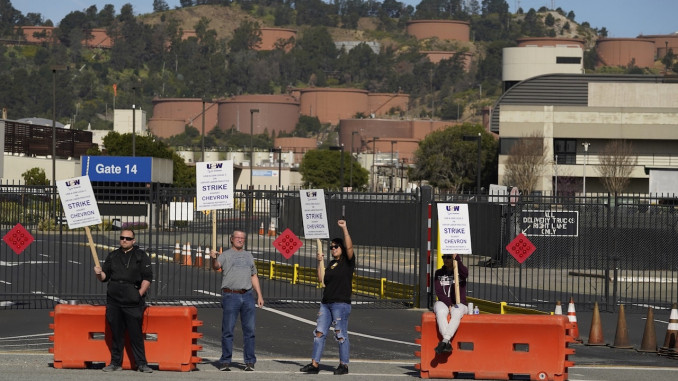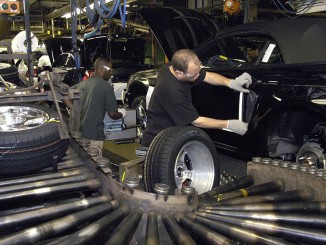
On May 28, 2022, striking workers at Chevron in Richmond, California voted by a narrow margin to ratify a contract and to call off their strike. The strike lasted over two months, a long strike reflecting the determination of the workers in a very difficult situation. The strike involved about 500 workers, who struck for many reasons, including increased compensation to keep up with the skyrocketing cost of living in the Bay Area, to halt the rise of out-of-control healthcare costs, to end severe understaffing and unreasonable work schedules, and to increase safety at the plant.
The contract they ratified was reached by United Steel Workers International negotiators, and includes a 12% pay increase over four years. That may sound good, but the Richmond workers from USW Local 12-5 wanted an additional 5% more than that to cover the burden of health care costs that has been shifted onto the workers. They didn’t get it. In fact, before going on strike, Chevron workers twice voted down a tentative agreement that was slightly better than the final agreement that was just ratified. The final approved contract is identical to the one the company offered before workers went on strike, but now the signing bonus has been decreased by $1,000. This final contract was a slap in the face to the workers.
During the strike, the plant was kept running at reduced capacity with the help of managers, supervisors, temporary workers and a few workers who crossed the picket line. The company also shifted some production to its plant in the Los Angeles area. A struggle of this type in this era, at one location of one company with little preparation and organization beforehand, is an uphill battle to say the least.
Strikes are most effective if they can stop production and thereby put pressure on management and the owners. A strike can be a tool to put pressure on the company if the workforce is mobilized and uses their struggle to publicize the war the bosses wage every day on workers in this society. The workers at Chevron could have used their fight as an example to the workers of the Bay Area and beyond of what is needed to fight back. The Chevron workers, however, were not successful in doing this.
It’s unclear whether this could have been possible if things developed differently. It was certainly known that among the 30,000 refinery and petrochemical workers in the USW across the country, many were frustrated after the national agreement between the USW and Marathon Petroleum Corp., which represents oil refiners and chemical makers in the U.S., was reached back in February 2022. But during these negotiations, there were protests held by USW workers in several states, opposing the terms of the national agreement. A lot of the anger was due to the oil companies refusing to meet workers’ demands of higher compensation, especially as oil companies had made record profits that year.
So, it’s an open question about what could have happened if the Richmond Chevron workers strike spread to include more workers at that facility, and more importantly workers at other facilities, too. Could the anger of many workers across the country at the skyrocketing living costs, and especially fuel costs, have rallied other workers behind these Chevron strikers? Could a more generalized anger at oil company profiteering have catapulted workers even in other industries to find ways to support the strike?
We don’t know. But a lesson we can draw from this strike is that it is extremely difficult for workers to win when we are isolated from one another. And future struggles of workers in this country will face the same challenges if we are unable to unite our forces with other workers at other facilities and even in other industries. And just like with the USW workers in Richmond, often one of the biggest obstacles to carrying out a more unified fight is not just the bosses, but often it is the conservative bureaucrats who tend to lead the unions. For workers to have the best shot at winning, we must find the ways to organize and lead our own struggles, so we can decide collectively the best strategy to ensure success. But workers learn through struggle, and often we can learn just as much from defeats as we can from victories.




